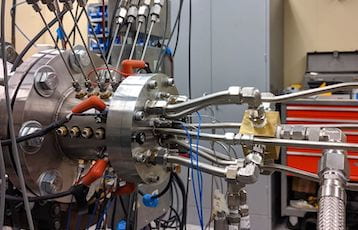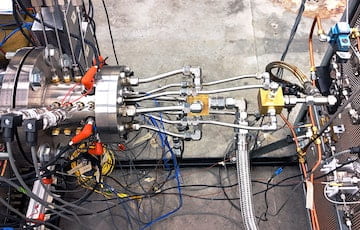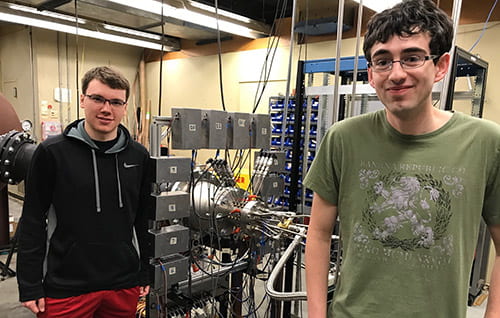Detonation is shock-induced combustion, which is intrinsically more efficient than slower burning deflagration. One of the most promising detonation engines is the continuous rotating detonation engine (CRDE) , where fuel is burned by transverse shock waves spinning in an annulus.
The high pressure behind the shock drives the shock to spin and at the same time forces the burned gas to exhaust at high speed. The shock also acts as a ‘bladeless’ compressor. The CRDE is a pressure gain combustor, which also contribute to produce thrust.
The video to the right details many of the spatio-temporal dynamics exhibited in rotating detonation rocket engines (RDEs), including combustion front interactions that behave like solitons. A complete bifurcation analysis of the dynamics is performed showing that our multi scale, dynamical model captures all the salient features of the combustion dynamics.
Recent News

Alum prepares to make space history
Alexis Harroun (A&A ’17) will be first to launch a rotating detonation rocket engine for an orbital flight.

Roberts wins AIAA Award
Quentin Roberts won the AIAA Abe M. Zarem award for his rotating detonation engine research with propellant mixing.

More efficient rockets
Ph.D. student James Koch’s research on rotating detonation engines may aid in building cheaper, lighter spacecraft.
UW News

Revolutionizing rocket launches
Popular Mechanics delves into James Koch’s mathematical breakthrough explaining the behavior of a rotating detonation engine.
Popular Mechanics

After 60 years, explosion-powered rockets are nearly here
A&A’s James Koch figures out the mathematical model that explains the patterns in a rotating detonation engine.
Wired

A&A undergrads win first in team at AIAA Region VI conference
Andrew Jacob, Chinmay Upadhye, Andrew Milligan, and Kevin Chau won first place for rotating detonation engine lab setup.
UW Aero & Astro

